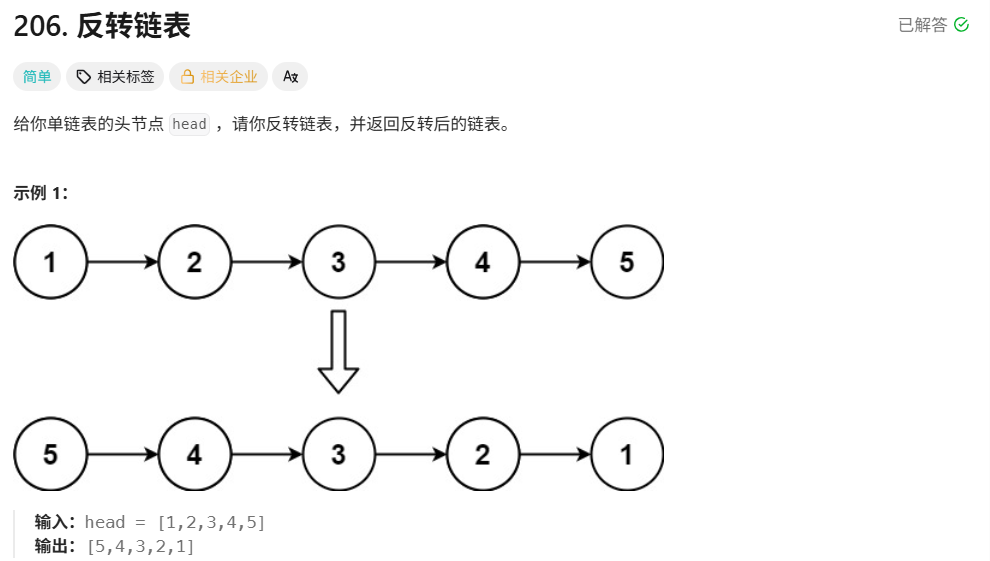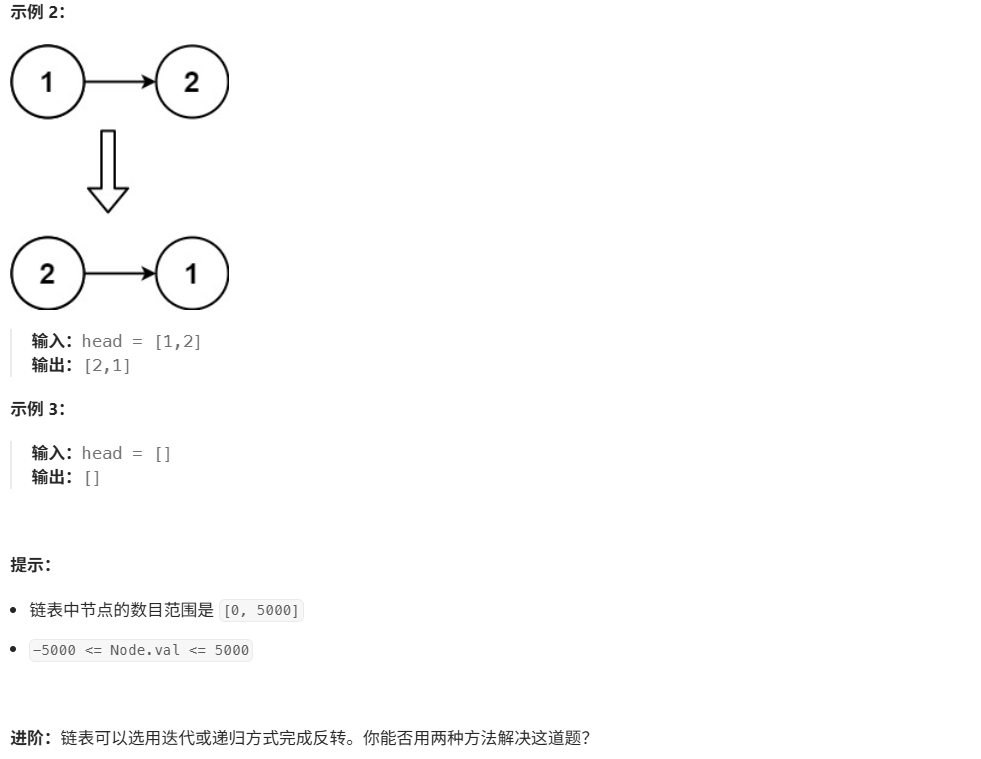原題鏈接:Leetcode 206. 反轉鏈表


解法一:迭代
/*** Definition for singly-linked list.* struct ListNode {* int val;* ListNode *next;* ListNode() : val(0), next(nullptr) {}* ListNode(int x) : val(x), next(nullptr) {}* ListNode(int x, ListNode *next) : val(x), next(next) {}* };*/
class Solution {
public:ListNode* reverseList(ListNode* head) {if(head==nullptr) return nullptr;ListNode* pre = nullptr;ListNode* now = head;while(now){ListNode* next = now->next;now->next = pre;pre = now;now = next;}return pre;}
};
解法二:遞歸
/*** Definition for singly-linked list.* struct ListNode {* int val;* ListNode *next;* ListNode() : val(0), next(nullptr) {}* ListNode(int x) : val(x), next(nullptr) {}* ListNode(int x, ListNode *next) : val(x), next(next) {}* };*/
class Solution {
public:ListNode* reverseList(ListNode *head) {if(head==nullptr || head->next==nullptr) return head;// 「遞」到鏈表末尾,拿到新鏈表的頭節點(舊鏈表的尾節點)ListNode* newhead = reverseList(head->next);// 讓下一個節點指向自己head->next->next = head;// 斷開原來的指針head->next = nullptr;return newhead;}
};
// 鏈表:1 -> 2 -> 3 -> 4 -> 5
// 遞歸調用順序:
// reverseList(1)
// reverseList(2)
// reverseList(3)
// reverseList(4)
// reverseList(5)
// 5->next==nullptr,返回 5
// newhead=5,head=4, 4->next=5, 5->next = 4(反轉),4->next=nullptr
// newhead=5,head=3, 3->next=4, 4->next = 3(反轉),3->next=nullptr
// newhead=5,head=2, 2->next=3, 3->next = 2(反轉),2->next=nullptr
// newhead=5,head=1, 1->next=2, 2->next = 1(反轉),1->next=nullptr
// return newhead=5



)
)




算法詳解與應用)


)



項目)

